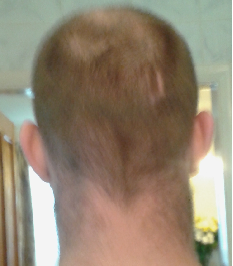 Description Each strand of hair is made up of a medulla, cortex, and cuticle. The innermost region, the medulla, is not always present and is an open, unstructured region. The highly structural and organized cortex, or middle layer of the hair, is the primary source of mechanical strength and water uptake. The cortex contains melanin, which Colours the fibre based on the number, distribution and types of melanin granules. The shape of the follicle determines the shape of the cortex, and the shape of the fibre is related to how straight or curly the hair is. Asian hair typically has a round fiber and is quite straight. Oval and irregularly shaped fibres are generally more wavy or even curly. The cuticle is the outer covering. Its complex structure slides as the hair swells and is covered with a single molecular layer of lipid that makes the hair repel water. The diameter of human hair varies from 17 to 180 micrometers (0.00067 to 0.0071 in). Function The hair found on the head serves as insulation to keep heat within the body and cooling (when sweat evaporates from soaked hair); as well as Protection from the sun, dust and sweet getting into the eyes. Colour Various. Shape Threadlike; similar to grass. Location Top of the head. 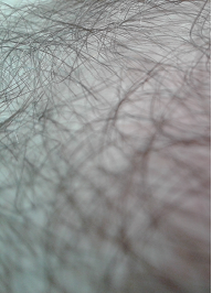 Description Androgenic hair or body hair are terminal hairs that develops on the human body during and after puberty. From childhood onward, regardless of gender, vellus hair covers almost the entire area of the human body and upon puberty areas including legs, arms, chest, back, pubic and face begin to grow darker and more abundantly. Exceptions include the lips, back of the ears, palms of hands, soles of the feet, certain external genital areas, the navel and scar tissue. Function Keep the body protected and temperature regulation. Reduce ultra violet light exposure. Colour Brown, black, blond, red, grey Shape Like a lawn of grass. 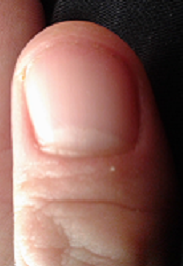 Description Fingernails and toenails are made of a tough protein called keratin as are animals' hooves and horns. It is a horn-like structure located at the end of fingers and toes forming flat plates. Each nail is composed of a root and body. The root fastens the nail to the finger or the toe by fitting into a groove in the skin and is closely moulded to the surface of the dermis. The only living part of a nail is situated inside or underneath the epidermis. Nails act as a counterforce when the end of the finger touches an object, thereby enhancing the sensitivity of the fingertip. Average growth is 1 millimetre per week. A fingernail or toenail takes about 6 months to grow from base to tip. Function A healthy finger nail has the function of protecting the distal phalanx, the fingertip, and the surrounding soft tissues from injuries. It also serves to enhance precise delicate movements of the distal digits through counter-pressure exerted on the pulp of the finger. The nail then acts as a counterforce when the end of the finger touches an object, thereby enhancing the sensitivity of the fingertip, even though there are no nerve endings in the nail itself. Finally, the nail functions as a tool, enabling for instance a so-called "extended precision grip" (e.g. pulling out a splinter in one's finger). Colour Mostly clear Shape Like fish scales. Location Ends of Fingers & Toes. 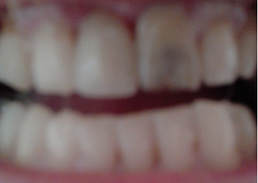 Description The teeth are 32 bony calcified projections in the jaw serving as organs of chewing. Every individual has two complete sets of teeth during the life cycle. The first set of teeth are the primary teeth. They are usually lost by age 14 and are replaced by the permanent teeth. There are 20 primary teeth and 32 permanent teeth. Function The first step of digestion is the softening of food stuffs and breaking them into smaller pieces through cutting, chewing, and tearing food into smaller pieces which make the digestive process easier by allowing a greater surface area and easier penetration of digestive juices. Colour White or yellowed. Shape Various shapes include incisors, canines, premolars, and molars. Location In the mouth. 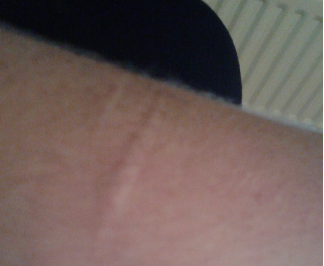 Description The largest human organ is the skin, with a surface area of about 25 square feet which forms the outer surface of the body. There are over 4 million pores in the skin. In 1 square inch of skin there lies 4 yards of nerve fibers, 1300 nerve cells, 100 sweat glands, 3 million cells, and 3 yards of blood vessels. Every square inch of the human body has an average of 32 million bacteria on it. Humans shed about 600,000 particles of skin every hour - about 1.5 pounds a year. Most dust particles in your house are made from dead skin. By 70 years of age, an average person will have lost 105 pounds of skin. The Thickness of skin ranges from 0.5 mm to 4 mm thick depending upon location. Thinner skin shows signs of ageing first. Function The skin shields the body against infection, injuries, parasites, and helps regulate the bodies temperature. It provides a store for lipids and water, and manufactures vitamin D; and excretes salts and small amounts of urea. The skin acts as a water resistant barrier so essential nutrients aren't washed out of the body, controls fluid loss through sweating. It also gathers sensory information about the environment. Colour Black, brown, yellow, red, pink, or white. Shape The form of the body. Location Covering the whole body. |
About
This Document has been put together using information gathered from Wikipedias Patikulamanasikara page links found in the section “Objects of contemplation” or the website “The 32 Parts of the Body”.
Photographs obtained from Google, Yahoo, or file images from research by myself & others in the past. As this is a work-in-progress information from different sources will be added as time allows, or becomes available, so please comment upon these posts. ArchivesCategories |
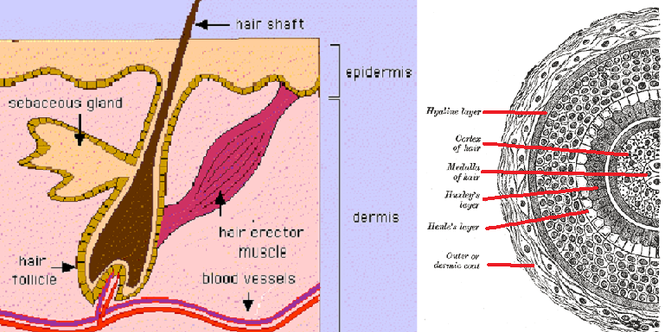
 RSS Feed
RSS Feed
